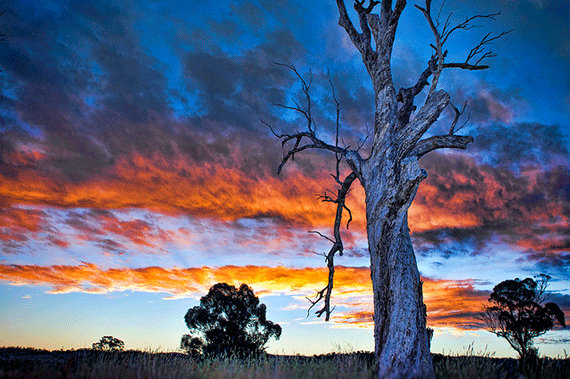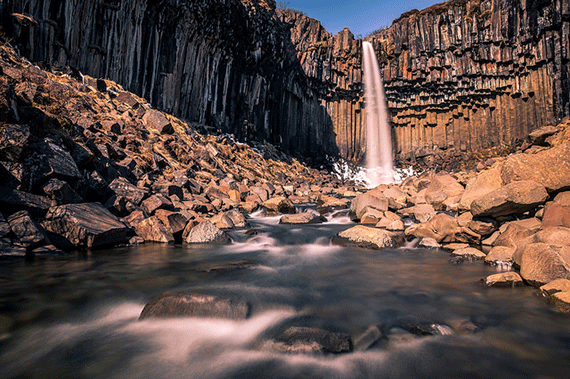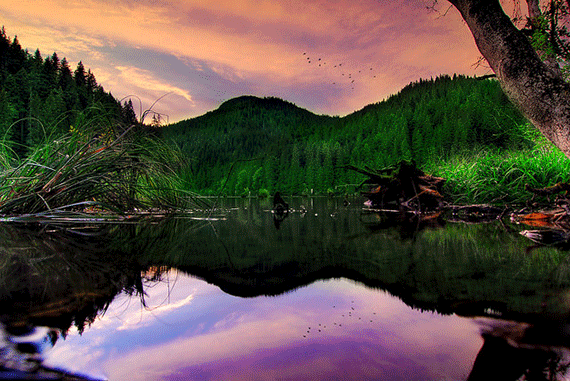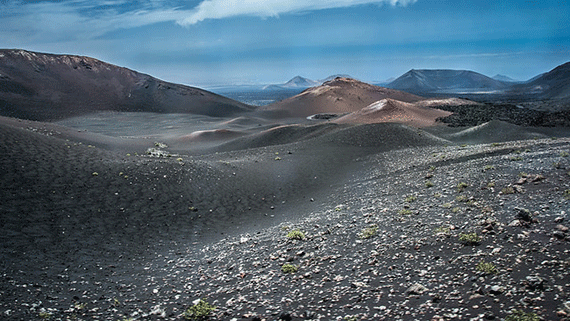Like most photographers I know, I, too, have had a love affair with taking photographs of nature. For some of us, it’s here that we first start to feel self confident about our photography. After all, most trees don’t wiggle and complain and scream out “I’ve got to go potty!” Rocks and streams rarely worry if their makeup is just right. Admittedly, some birds and bees do move around as fast as basketball and football players; but, overall, things are much slower when dealing with Mother Nature as your subject. Sometimes at dusk, if your subject is the sun, it does feel like he’s rushing off to another meeting, but that’s OK. When you think in terms of nature as your subject, you have the world’s greatest model. She will let you shoot as often as you want and at whatever angle you want. In fact, she often invites you to try new things.

Photo by Indigo Skies Photography; ISO 100, f4.0, 1/160-second exposure.
Wait for the Right Moment
When shooting nature, you must show her as much respect as you would a human subject. Just as you must show patience when taking a family portrait with six non-sitters (18 months or less), you often have to wait for the right moment or right lighting with nature. Sure, you could bring in your own lighting, but unlike a studio, you must anticipate and predict where your shadows will fall. Don’t get me wrong—a flash can be useful in nature shots, but often it becomes much more difficult to make nature shots look, well, natural. One remedy for this problem is to always bring a tripod. Being the perfect model she is, Mother Nature can stand still much longer than you can hand hold any camera.

Photo by Giuseppe Milo; ISO 200, f/11.0, 8-second exposure.
Nature is much more patient than I am. After climbing, hiking, or walking to a certain location, I tend to want to start shooting as fast as I can. Mother Nature teaches me that good things are worth waiting for, and great things can’t be rushed. Some of the things I admire now took literally thousands of years to create. Sometimes I wonder if I offend God when I take a shot at 1/2000 of a second, and say, “There, I got it.”
Make Mother Nature Look Her Best
There is an unspoken rule in portrait photography that the photographer should never physically touch his or her subject. Doing so would be considered crossing the line of the photographer/model relationship. In dealing with nature, some photographers still follow this rule to the letter; some do not. I, being one of the latter, believe there is nothing wrong with giving her respect, but I also try to help where possible.
When shooting a regular model, if her hair isn’t quite right or her outfit is bunched up, it is no big deal to ask her to adjust it. If you need to move a branch or a rock that seems out of place, this is not cheating. This is showing your subject at her best. Now, moving a branch or having someone hold it out of the way is not the same thing as breaking a branch. That’s where photographers who show no respect start crossing the line.
Subjects that come to you have usually spent a good amount of time picking their clothes or putting on makeup. There is nothing wrong with using filters to make Mother Nature look her best. Diamonds may be a girl’s best friend, but a good polarizer can be nature’s best friend, especially if water is involved.

Photo by Riccardo Cuppini; ISO 200, f/8.0, 1/15-second exposure.
When I was about 19 years old, I visited the Zen Center of Los Angeles. There, I was hypnotized by a photograph. The photo was shot in black and white and was a perfect geometric reflection of a mountain beside a calm lake, although I did not know that originally. The shot was taken as a horizontal shot, but shown to me briefly in a vertical position, and then I was asked to close my eyes. To me, it reminded me of one of those ink blot pictures that psychiatrists use to ask you what you see.
Zen Master Diado did exactly that, except he had me keep my eyes closed, and I had to describe in detail everything I saw and felt. I immediately became aware of water, and a mountain, and a breeze, but then I noticed a scent as well. He encouraged me to tell him more. I described a certain yellow flower that I had never seen before and the sweet honey-like scent it gave off. I was told to open my eyes and he showed me the picture horizontally. There were no flowers in the picture. I was disappointed, until he told me that was because he was standing in them when he took the picture.

Photo by kuhnmi; ISO 125, f/8.0, 1/160-second exposure.
I only met with Zen Master Diado for maybe two hours, yet I still feel his influence 25 years later. From him, I learned to respect Mother Nature and listen to what she could tell me. Great shots of beautiful young women do not just happen because the model is beautiful. It’s the combination of a great subject and a great photographer who ends up creating works of art the people cannot forget. Mother Nature is no different; respect her, look for her best features, be patient with her, encourage her, if she needs help offer it, but don’t cross over the line.
About the Author:
Award winning writer / photographer Tedric Garrison has 30 years experience in photography (better-photo-tips.blogspot.com). As a Graphic Art Major, he has a unique perspective. His photo eBook “Your Creative Edge” proves creativity can be taught. Today, he shares his wealth of knowledge with the world through his website.
Like This Article?
Don't Miss The Next One!
Join over 100,000 photographers of all experience levels who receive our free photography tips and articles to stay current:






Leave a Reply